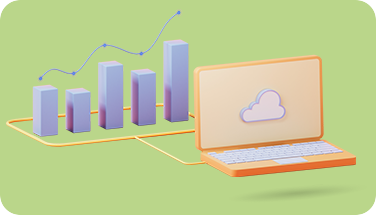The real benefits of using integrated FP&A software
FP&A stands for financial planning and analysis, a fundamental operation in any organization to understand its present financial state and how to analyze data to make projections for the future. A modern FP&A system is required to deal with the modern issues an organization faces such as budgeting, financial reporting, compliance with financial regulations, risk management, and much more.

Traditionally, legacy FP&A operations are based on spreadsheets which can require lots of manual data entry, while also being prone to error and inefficiencies. Today we will discuss the modern solution to FP&A that can take other data into account, create a single source of truth, and optimize how your financial team works.
Why FP&A using Excel spreadsheets isn’t sustainable
Legacy FP&A systems rely on manual data entry through spreadsheets, or even paper-based systems. Not only is this insecure but it makes many financial processes longer than necessary because of isolated spreadsheets, siloed data, and productivity issues.
It’s clear that financial professionals can get bogged down with long data entry tasks and struggle to make their work count without holistic reports, forecasts that take all data into account, and the ability to make informed projections for the future.
Not only is this a waste of paid hours, but a reduction in the number of certified accountants globally represents a trend of not using current resources to their best ability or productivity. These legacy systems can represent a chink in the armor of your organization and can leave you susceptible to external factors such as economic decline, while also inhibiting growth.
Click to read FP&A product brochure gated
What a Cloud-based ERP solution can provide
The FP&A function of ERP software provides a modern, Cloud-based solution to the issues legacy FP&A systems create.
Streamlined operations on the Cloud
ERP utilizes the Cloud to store your organization's data. Consider how much of your everyday life is already on the Cloud, such as social media networks, or even your smartphone – It just makes sense to store your organization's data on the Cloud as well.
The Cloud is more secure than relying on spreadsheets, much more than paper records, with Cloud platforms such as Microsoft Azure being trusted by many enterprises and governments.
Another advantage of moving data to the Cloud is that it also increases cost efficiency as you don’t have to buy more server space when you grow, helping you meet sustainability compliance and reduce your carbon footprint.
Moreover, the Cloud is the perfect home for remote work, no longer do you need to subscribe to costly VPNs or time-consuming log-in pages. With the Cloud, your people can access your data with flexibility and ease and get straight to work, with everything at their fingertips.
Integrated data
Cloud-based data also means it can be integrated easily with other functions such as HR or procurement. More advanced and ad-hoc reporting can make financial decisions more responsive as well as informed with real-time updates to budgets.
What’s more, the Cloud can provide a single source of truth for your financial data, allowing you to align operational, strategic, and financial planning. Financial analysis is more effective with this singularity, providing reports and forecasts that take all areas of your organization into account, leaving no room for oversight.
Better use of current resources
Undoubtedly, financial teams can waste much of their time through manual data entry. By automating menial data entry with trusted AI processes your current financial professionals can be used where a human touch is required, such as forecasting and overseeing reports.
Automation also has the advantage of consistency; small repetitive tasks can wear on a human employee, but the trained AI algorithms are made for these tasks, decreasing data consolidation and reducing the risk of error.
Build confidence for the modern CFO
Traditionally, a CFO focuses on maintaining and reporting on an organization’s financial health. However, the modern CFO is expected to be cross-functional, up to date with the latest digital trends and necessary legal compliance, as well as to strategically manage risk and build resilience.
The operation of the C-suite must change for priorities to be met; collaboration in the C-suite is now fundamental to success and efficiency in the modern world.
With the data they need at their fingertips, and with a single source of truth, a modern CFO can face their new responsibilities with confidence by investing in accurate and responsive financial analysis and planning systems.
How Unit4’s ERPx suite with FP&A can provide these benefits
Unit4 has a lot of experience in building Cloud-based ERP solutions that work, read BARC’s independent survey to learn why 72% of our customers would recommend our FP&A product. We integrate HCM, FP&A, and more, to create fit-for-purpose software that provides a modern solution. With our functional software, we can fit the shape of your financial operations, allowing you to configure the software to your needs with low-code configuration.
Digital transformation can feel overwhelming, but Unit4 can help implement this seamlessly without hiccups thanks to our dedicated team. This can provide a high degree of return on investment, allowing you to easily grow in the future, and when economic decline strikes you can know your financial operations are sound enough to bounce back quickly and strategize for the future.
Want to hear more? Book a demo today or consult any of our customer stories to hear how we helped other organizations implement the change they needed.





